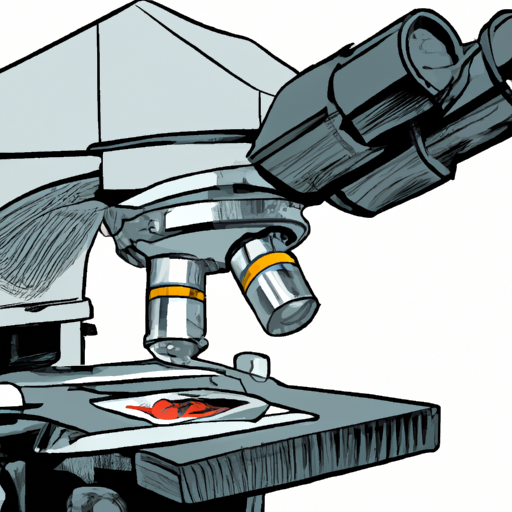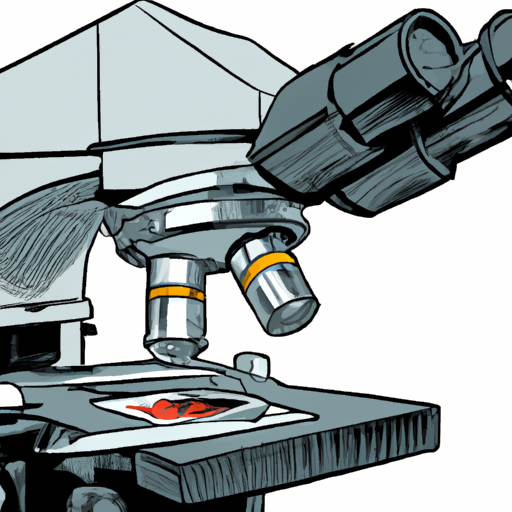Have you ever wondered about the differences between a microscope and a digital microscope? Well, you’re in luck! In this article, we will explore the distinctions between these two fascinating devices. Stick around to uncover the unique features and advantages each one offers, as we shed some light on this intriguing scientific topic.

Definition and Function
Microscope
A microscope is a scientific instrument that is used to magnify and observe small objects that are not visible to the naked eye. It consists of an optical system that uses lenses to focus on the specimen and an illumination system to provide light for a clear view. Traditional microscopes have been used for centuries by scientists, researchers, and students to study various samples and organisms in detail.
Digital Microscope
A digital microscope, on the other hand, is a modern variation of the traditional microscope that incorporates digital technology. It combines the functionalities of a microscope with the ability to capture and display images or videos directly on a computer or a screen. Digital microscopes typically have a built-in camera that allows users to view real-time images of the specimen, and they often offer the capability to capture high-resolution images for documentation or analysis purposes.
Optical System
Microscope
In a microscope, the optical system plays a crucial role in providing clear and magnified images of the specimen. It consists of multiple lenses, including an objective lens and an eyepiece. The objective lens collects light from the specimen and forms an intermediate image that is magnified by the eyepiece, which further enlarges the image for the viewer. The quality of the lenses and their alignment greatly affects the clarity and resolution of the observed specimen.
Digital Microscope
The optical system of a digital microscope is similar to that of a traditional microscope, but it also includes a digital imaging sensor and a camera. The camera captures the image formed by the objective lens, and the sensor converts it into a digital format. This digital image can then be displayed on a computer or a screen in real-time. Some digital microscopes also offer advanced features such as zoom capabilities, allowing users to adjust the magnification without changing the objective lens.
Magnification
Microscope
Magnification is a fundamental aspect of microscopes. It refers to the ability of the microscope to enlarge the image of the specimen. Traditional microscopes commonly have multiple objective lenses with different magnification levels, allowing users to switch between magnifications by rotating the objective turret. The total magnification is determined by multiplying the magnification of the objective lens by the magnification of the eyepiece.
Digital Microscope
Digital microscopes also offer different levels of magnification, but the magnification is often achieved digitally rather than through interchangeable objective lenses. By zooming in or out on the captured image, the digital microscope can simulate different magnification levels. However, it’s important to note that the digital zoom may result in some loss of image quality compared to the optical magnification of a traditional microscope.
Illumination
Microscope
Illumination is essential in microscopes as it provides the necessary light to illuminate the specimen. Traditional microscopes typically use a light source located at the base of the instrument, such as a halogen bulb or an LED, which passes light through the specimen. The light is then focused on the specimen by the condenser lens, enhancing visibility and contrast.
Digital Microscope
Digital microscopes often incorporate built-in LED lights around the lens or sensor, which provides direct illumination for the specimen. The light is usually adjustable in intensity to accommodate different types of specimens or imaging conditions. Some advanced digital microscopes may also offer alternative illumination techniques, such as polarized or darkfield illumination, which can enhance the visibility of specific samples or structures.

Image Display and Capture
Microscope
With a traditional microscope, the image of the specimen is viewed directly through the eyepiece by the user. The observer’s eye perceives the magnified image formed by the objective and eyepiece lenses. Viewers can adjust the focus and interpupillary distance to optimize the clarity and comfort of the image. However, traditional microscopes do not have the capability to capture images or videos for further analysis or sharing.
Digital Microscope
Digital microscopes excel in image display and capture capabilities. As the name implies, they have a built-in digital camera that captures high-resolution images or videos of the specimen. These images can then be displayed in real-time on a computer or a screen, allowing multiple people to observe simultaneously. Furthermore, digital microscopes often have software interfaces that enable users to adjust various imaging parameters, such as exposure, white balance, or color saturation, to optimize the captured image quality.
Image Quality
Microscope
The image quality produced by a traditional microscope depends on various factors such as the quality of the lenses, the illumination, and the observer’s visual acuity. The resolution and clarity of the image largely dictate the level of detail that can be observed. Traditional microscopes can provide excellent image quality when the lenses are of high quality and properly aligned.
Digital Microscope
Digital microscopes also offer high-quality image output, but the image quality can be influenced by factors such as the resolution of the camera sensor, the optical quality of the lenses, and the image processing algorithms. The digital format allows for easy sharing, analysis, and documentation of the captured images. However, it’s important to note that digital images may have limitations in terms of color accuracy and dynamic range compared to the visual perception provided by a traditional microscope.
Portability and Convenience
Microscope
Traditional microscopes are often large and require a stable surface for optimal use. They are typically found in laboratories, educational institutions, or research facilities. Due to their size and complexity, they are not as easily portable or convenient for on-the-go observations.
Digital Microscope
Digital microscopes are designed with portability and convenience in mind. They are generally compact and lightweight, making them easier to transport and suitable for outdoor or fieldwork. Their digital nature allows users to directly connect them to a computer or a portable device, eliminating the need for additional eyepieces or eyestrain. The ability to instantly capture and share images also adds to the convenience of digital microscopes.
Sample Observations
Microscope
Traditional microscopes are versatile tools that have been used for a wide range of sample observations. They are commonly employed in biological sciences, medical research, material sciences, and forensic investigations. Microscopes allow scientists and researchers to study cellular structures, microorganisms, tissues, crystals, and other small objects in fine detail.
Digital Microscope
Digital microscopes offer similar capabilities for sample observations as traditional microscopes. They can be used in various fields such as biology, pathology, geology, and manufacturing. Digital microscopes are particularly useful for documenting and analyzing samples, as the captured images can be easily stored, shared, or compared. They are also valuable in distance learning scenarios where students can remotely observe specimens and participate in virtual classroom discussions.
Applications
Microscope
Microscopes have a broad range of applications across different scientific disciplines. In biology, microscopes are crucial for studying cellular structures, identifying microorganisms, and investigating disease processes. In materials science, microscopes are used to analyze the composition and structure of materials at the microscopic level. Additionally, microscopes play a significant role in fields like forensics, environmental science, and quality control in manufacturing industries.
Digital Microscope
Digital microscopes inherit the same applications as traditional microscopes but offer additional advantages in terms of documentation and communication. Their digital image capture capability facilitates record-keeping, analysis, and sharing of samples. Digital microscopes find applications in fields such as telemedicine, remote scientific collaborations, quality assurance in industry, and digital pathology. They also provide an effective tool for educators to engage students in hands-on microscopy experiences.
Cost
Microscope
The cost of traditional microscopes can vary widely depending on factors such as the quality and brand of the microscope, the magnification range, and the specific requirements of the user. Entry-level microscopes for educational purposes can be relatively affordable, while high-end research-grade microscopes can be significantly more expensive. Maintenance and the cost of accessories such as lenses and slides should also be considered.
Digital Microscope
Digital microscopes generally have higher upfront costs compared to entry-level traditional microscopes due to the incorporation of digital imaging technology. The price largely depends on the specifications, image quality, brand, and additional features. However, digital microscopes may offer long-term cost savings in terms of reduced need for consumables such as slides and chemicals, as well as the convenience of digital image storage and sharing.
In conclusion, while both traditional microscopes and digital microscopes serve the common purpose of magnifying small objects, they have distinct differences in their functionality, optical systems, image display and capture capabilities, portability, convenience, and cost. Each type of microscope has its own advantages and applications. Traditional microscopes excel in optical performance and clarity for direct observation, while digital microscopes offer the conveniences of image capture, sharing, and remote viewing. The choice between the two depends on the specific needs and priorities of the user, as well as the field of study or application.




